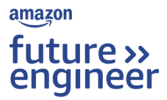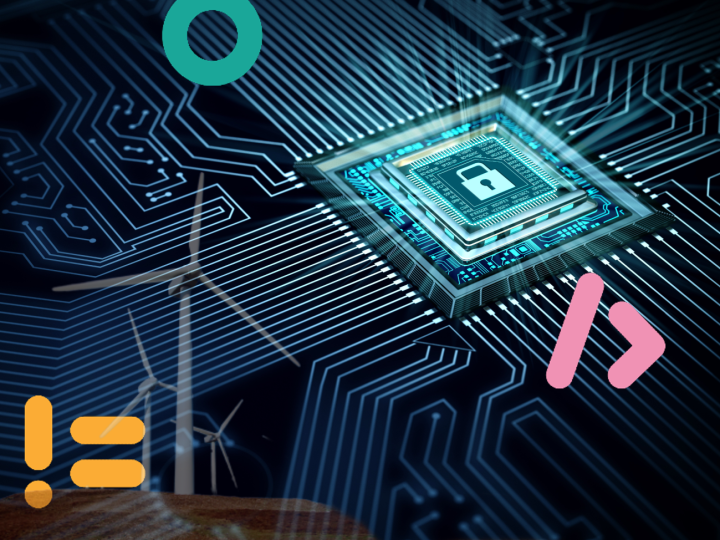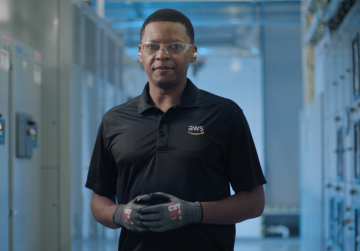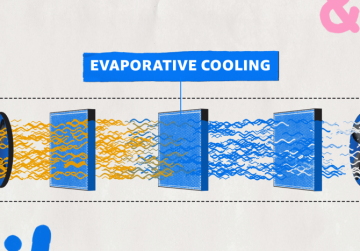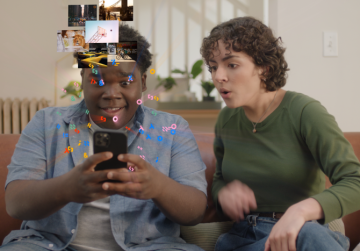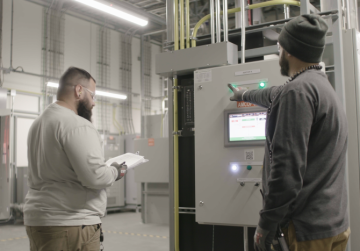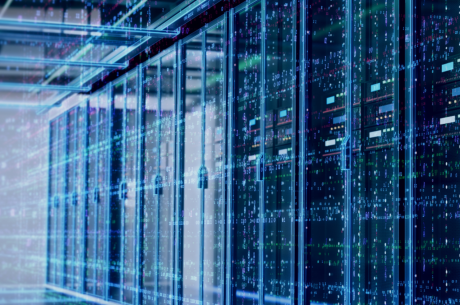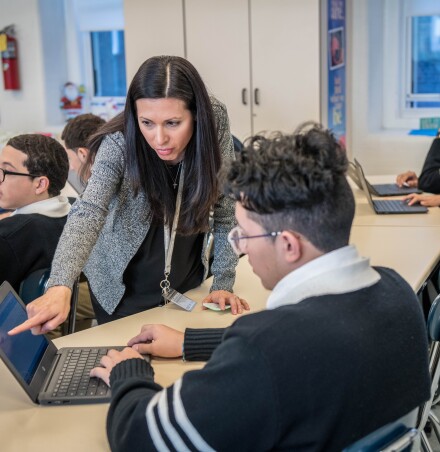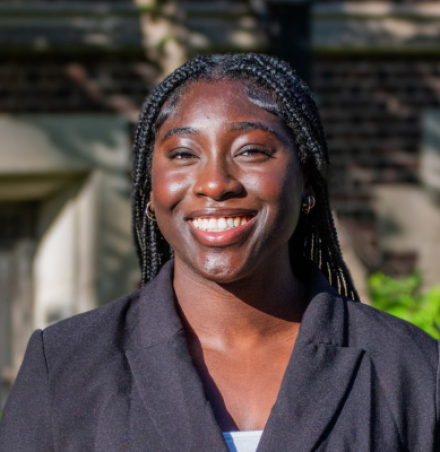AWS Data Center Tour 2:
Keeping Data Safe and Sustainable
Discover the infrastructure and careers that keep your information safe and sustainable with this free and interactive behind-the-scenes Data Center Career Tour!
0:00 / 0:00
Video Companion

Students gain exposure to the careers of the future as they discover how careers at Amazon Web Services and data centers keep your data protected, available at all times, and sustainable.
On the Keeping Data Safe and Sustainable tour, students will explore how data centers keep their data safe and sustainable so they don’t have to worry about uploading their information to the cloud. Students will learn how data centers use a natural process to keep servers from overheating, how redundancy and sensors ensure data is always available, cyber and physical security measures to keep data protected, and sustainability efforts to protect the environment.
In this tour, students explore the following careers: Data Center Engineer Operator (DCEO), control technician, cybersecurity specialist, and sustainability specialist.
On the Keeping Data Safe and Sustainable tour, students will explore how data centers keep their data safe and sustainable so they don’t have to worry about uploading their information to the cloud. Students will learn how data centers use a natural process to keep servers from overheating, how redundancy and sensors ensure data is always available, cyber and physical security measures to keep data protected, and sustainability efforts to protect the environment.
In this tour, students explore the following careers: Data Center Engineer Operator (DCEO), control technician, cybersecurity specialist, and sustainability specialist.

The 45 minute, interactive tour is aligned to Next Generation Science Standards (NGSS) and CSTA K-12 Computer Science Standards. The Teacher Toolkit includes a facilitation guide, worksheets, and other resources to support learning during the tour. Recommended for grades 3+.
Keeping Data Safe and Sustainable is aligned to the following CSTA standards.
The tour is aligned to the following Next Generation Science Standards (NGSS) disciplinary core ideas, crosscutting concepts, and science and engineering practices.
Keeping Data Safe and Sustainable is aligned to the following CSTA standards.
- 1B-IC-18 Discuss computing technologies that have changed the world, and express how those technologies influence, and are influenced by, cultural practices.
- 1B-CS-01 Describe how internal and external parts of computing devices function to form a system.
- 1B-CS-02 Model how computer hardware and software work together as a system to accomplish tasks.
- 2-NI-05 Explain how physical and digital security measures protect electronic information.
- 3A-NI-05 Give examples to illustrate how sensitive data can be affected by malware and other attacks.
- 3A-IC-24 Evaluate the ways computing impacts personal, ethical, social, economic, and cultural practices.
The tour is aligned to the following Next Generation Science Standards (NGSS) disciplinary core ideas, crosscutting concepts, and science and engineering practices.
- Crosscutting Concept: Cause and Effect Events have causes, sometimes simple, sometimes multifaceted.
- Crosscutting Concept: Systems and System Models A system is an organized group of related objects or components; models can be used for understanding and predicting the behavior of systems.
- Crosscutting Concept: Energy and Matter Tracking energy and matter flows, into, out of, and within systems helps one understand their system’s behavior.
- 4-PS3-2 Energy Make observations to provide evidence that energy can be transferred from place to place by sound, light, heat, and electric currents.
- 4-ESS3-1 Earth and Human Activity Obtain and combine information to describe that energy and fuels are derived from natural resources and their uses affect the environment.
- 4-ESS3-2 Earth and Human Activity Generate and compare multiple solutions to reduce the impacts of natural Earth processes on humans.
- 5-ESS3-1 Earth and Human Activity Obtain and combine information about ways individual communities use science ideas to protect the Earth’s resources and environment.
- MS-ESS2-4 Develop a model to describe the cycling of water through Earth’s systems driven by energy from the sun and the force of gravity.
- MS-ESS3-3 Earth and Human Activity Apply scientific principles to design a method for monitoring and minimizing a human impact on the environment.
- MS-ESS3-4 Earth and Human Activity Construct an argument supported by evidence for how increases in human population and per-capita consumption of natural resources impact Earth’s systems.
- MS-ESS3-5 Earth and Human Activity Ask questions to clarify evidence of the factors that have caused the rise in global temperatures over the past century.
- MS-PS3-3 Energy Apply scientific principles to design, construct, and test a device that either minimizes or maximizes thermal energy transfer.
- MS-ESS3-2 Earth and Human Activity Analyze and interpret data on natural hazards to forecast future catastrophic events and inform the development of technologies to mitigate their effects.
- MS-ETS1-1 Engineering Design Define the criteria and constraints of a design problem with sufficient precision to ensure a successful solution, taking into account relevant scientific principles and potential impacts on people and the natural environment that may limit possible solutions.
- HS-ESS3-1 Earth and Human Activity Construct an explanation based on evidence for how the availability of natural resources, occurrence of natural hazards, and changes in climate have influenced human activity.
HS-ESS3-4 Earth and Human Activity Evaluate or refine a technological solution that reduces impacts of human activities on natural systems. - HS-ESS3-1 Earth and Human Activity Construct an explanation based on evidence for how the availability of natural resources, occurrence of natural hazards, and changes in climate have influenced human activity.
- HS-PS3-4Energy Plan and conduct an investigation to provide evidence that the transfer of thermal energy when two components of different temperature are combined within a closed system results in a more uniform energy distribution among the components in the system (second law of thermodynamics).
- HS-ETS1-3 Engineering Design Evaluate a solution to a complex real-world problem based on prioritized criteria and trade-offs that account for a range of constraints, including cost, safety, reliability, and aesthetics as well as possible social, cultural, and environmental impacts.

Kahoot!: The fun, game-like tour is available for FREE on Kahoot! to all interested classrooms and families. Students can play against each other while learning about data safety and sustainability at Amazon Web Services (AWS). No account required.
Teacher Toolkit
Our Teacher Toolkit provides educators with guides, worksheets, and other documents aligned to CSTA K-12 Computer Science Standards and Next Generation Science Standards (NGSS). Use these materials to discover all the possibilities with computer science learning and careers of the future, and to set students up for success before, during, and after the tour.
-
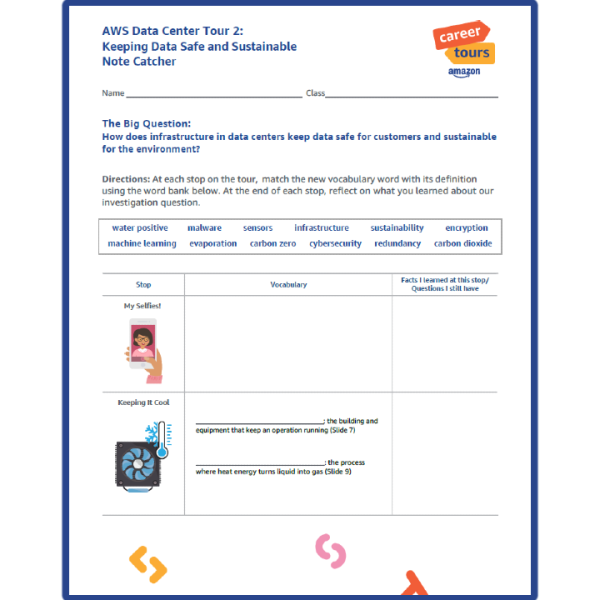 Student WorksheetDistribute graphic organizers for students to capture their biggest learnings and wonderings on the Keeping Data Safe and Sustainable tour.
Student WorksheetDistribute graphic organizers for students to capture their biggest learnings and wonderings on the Keeping Data Safe and Sustainable tour. Distribute graphic organizers for students to capture their biggest learnings and wonderings on the Keeping Data Safe and Sustainable tour.Distribute graphic organizers for students to capture their biggest learnings and wonderings on the Keeping Data Safe and Sustainable tour.
Distribute graphic organizers for students to capture their biggest learnings and wonderings on the Keeping Data Safe and Sustainable tour.Distribute graphic organizers for students to capture their biggest learnings and wonderings on the Keeping Data Safe and Sustainable tour. -
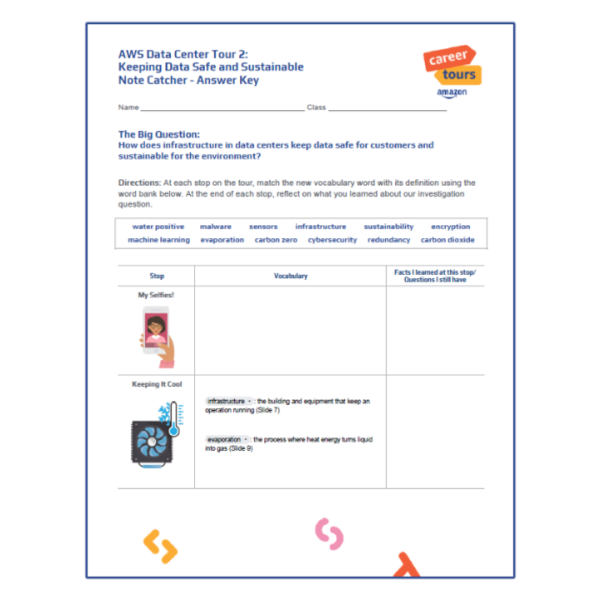 Student Worksheet Answer KeyCheck your students fill-in-the-blank answers on the student worksheet.
Student Worksheet Answer KeyCheck your students fill-in-the-blank answers on the student worksheet. Check your students fill-in-the-blank answers on the student worksheet.Check your students fill-in-the-blank answers on the student worksheet.
Check your students fill-in-the-blank answers on the student worksheet.Check your students fill-in-the-blank answers on the student worksheet. -
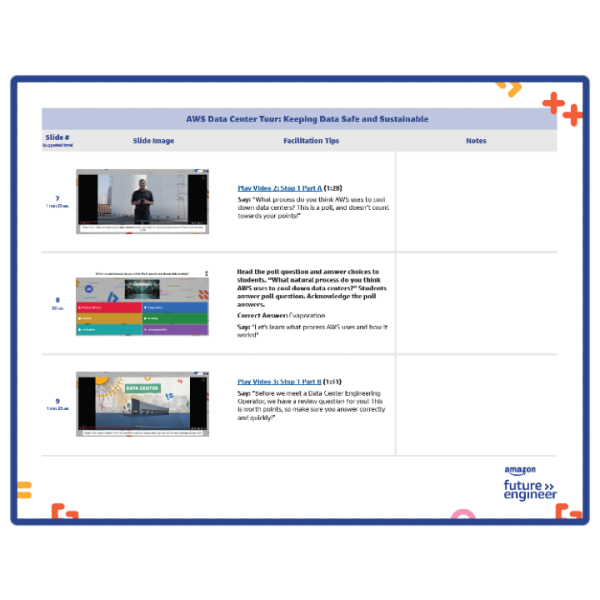 Facilitation GuideRead instructions for setting up the Kahoot! tour with classes. Slide by slide script for delivering the Keeping Data Safe and Sustainable tour to students.
Facilitation GuideRead instructions for setting up the Kahoot! tour with classes. Slide by slide script for delivering the Keeping Data Safe and Sustainable tour to students.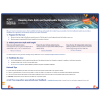 Read instructions for setting up the Kahoot! tour with classes. Slide by slide script for delivering the Keeping Data Safe and Sustainable tour to students.Read instructions for setting up the Kahoot! tour with classes. Slide by slide script for delivering the Keeping Data Safe and Sustainable tour to students.
Read instructions for setting up the Kahoot! tour with classes. Slide by slide script for delivering the Keeping Data Safe and Sustainable tour to students.Read instructions for setting up the Kahoot! tour with classes. Slide by slide script for delivering the Keeping Data Safe and Sustainable tour to students. -
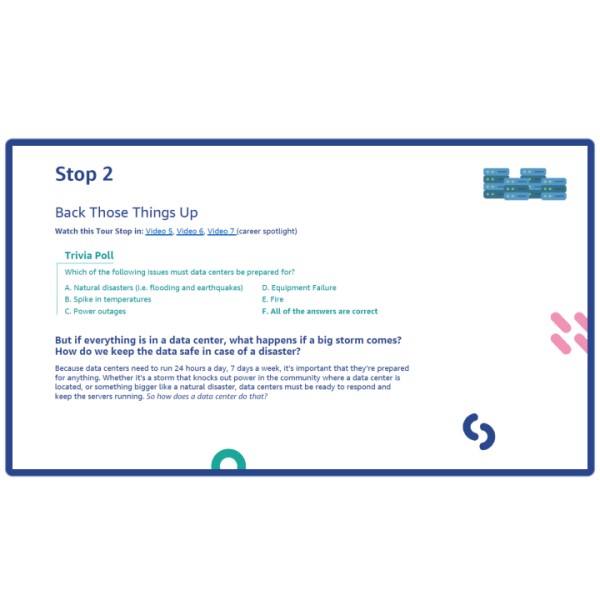 Key Student LearningsDiscover the key vocabulary and learnings covered on the Keeping Data Safe and Sustainable tour by tour stop.
Key Student LearningsDiscover the key vocabulary and learnings covered on the Keeping Data Safe and Sustainable tour by tour stop.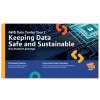 Discover the key vocabulary and learnings covered on the Keeping Data Safe and Sustainable tour by tour stop.Discover the key vocabulary and learnings covered on the Keeping Data Safe and Sustainable tour by tour stop.
Discover the key vocabulary and learnings covered on the Keeping Data Safe and Sustainable tour by tour stop.Discover the key vocabulary and learnings covered on the Keeping Data Safe and Sustainable tour by tour stop. -
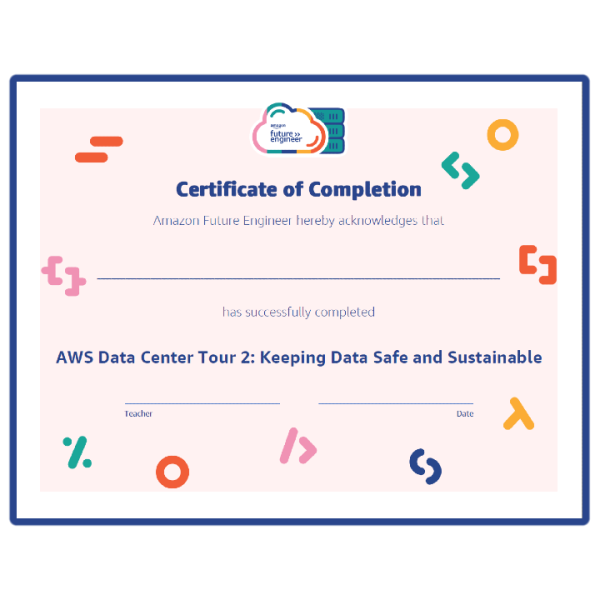 CertificatePrint and distribute student certificates to celebrate completing the tour!
CertificatePrint and distribute student certificates to celebrate completing the tour! Print and distribute student certificates to celebrate completing the tour!Print and distribute student certificates to celebrate completing the tour!
Print and distribute student certificates to celebrate completing the tour!Print and distribute student certificates to celebrate completing the tour!
FAQs
What will my class see on the tours?
On the Keeping Data Safe and Sustainable tour, students will explore how data centers keep their data safe and sustainable so they don’t have to worry about uploading their information to the cloud. Students will learn how data centers use a natural process to keep servers from overheating, how redundancy and sensors ensure data is always available, cyber and physical security measures to keep data protected, and sustainability efforts to protect the environment. Along the way, they’ll meet a data center engineer operator (DCEO), control technician, cybersecurity specialist, and sustainability specialist.
To learn more, check out the teacher toolkit resources.
To learn more, check out the teacher toolkit resources.
What CSTA standards is the tour aligned to?
Keeping Data Safe and Sustainable is aligned to the following CSTA standards:
- 1B-IC-18 Discuss computing technologies that have changed the world, and express how those technologies influence, and are influenced by, cultural practices.
- 1B-CS-01 Describe how internal and external parts of computing devices function to form a system.
- 1B-CS-02 Model how computer hardware and software work together as a system to accomplish tasks.
- 2-NI-05 Explain how physical and digital security measures protect electronic information.
- 3A-NI-05 Give examples to illustrate how sensitive data can be affected by malware and other attacks.
- 3A-IC-24 Evaluate the ways computing impacts personal, ethical, social, economic, and cultural practices.
What NGSS Standards is the tour aligned to?
The tour is aligned to the following Next Generation Science Standards (NGSS) disciplinary core ideas, crosscutting concepts, and science and engineering practices.
- Crosscutting Concept: Cause and Effect Events have causes, sometimes simple, sometimes multifaceted.
- Crosscutting Concept: Systems and System Models A system is an organized group of related objects or components; models can be used for understanding and predicting the behavior of systems.
- Crosscutting Concept: Energy and Matter Tracking energy and matter flows, into, out of, and within systems helps one understand their system’s behavior.
- 4-PS3-2 Energy Make observations to provide evidence that energy can be transferred from place to place by sound, light, heat, and electric currents.
- 4-ESS3-1 Earth and Human Activity Obtain and combine information to describe that energy and fuels are derived from natural resources and their uses affect the environment.
- 4-ESS3-2 Earth and Human Activity Generate and compare multiple solutions to reduce the impacts of natural Earth processes on humans.
- 5-ESS3-1 Earth and Human Activity Obtain and combine information about ways individual communities use science ideas to protect the Earth’s resources and environment.
- MS-ESS2-4 Develop a model to describe the cycling of water through Earth’s systems driven by energy from the sun and the force of gravity.
- MS-ESS3-3 Earth and Human Activity Apply scientific principles to design a method for monitoring and minimizing a human impact on the environment.
- MS-ESS3-4 Earth and Human Activity Construct an argument supported by evidence for how increases in human population and per-capita consumption of natural resources impact Earth’s systems.
- MS-ESS3-5 Earth and Human Activity Ask questions to clarify evidence of the factors that have caused the rise in global temperatures over the past century.
- MS-PS3-3 Energy Apply scientific principles to design, construct, and test a device that either minimizes or maximizes thermal energy transfer.
- MS-ESS3-2 Earth and Human Activity Analyze and interpret data on natural hazards to forecast future catastrophic events and inform the development of technologies to mitigate their effects.
- MS-ETS1-1 Engineering Design Define the criteria and constraints of a design problem with sufficient precision to ensure a successful solution, taking into account relevant scientific principles and potential impacts on people and the natural environment that may limit possible solutions.
- HS-ESS3-1 Earth and Human Activity Construct an explanation based on evidence for how the availability of natural resources, occurrence of natural hazards, and changes in climate have influenced human activity.
- HS-ESS3-4 Earth and Human Activity Evaluate or refine a technological solution that reduces impacts of human activities on natural systems.
- HS-ESS3-1 Earth and Human Activity Construct an explanation based on evidence for how the availability of natural resources, occurrence of natural hazards, and changes in climate have influenced human activity.
- HS-PS3-4Energy Plan and conduct an investigation to provide evidence that the transfer of thermal energy when two components of different temperature are combined within a closed system results in a more uniform energy distribution among the components in the system (second law of thermodynamics).
- HS-ETS1-3 Engineering Design Evaluate a solution to a complex real-world problem based on prioritized criteria and trade-offs that account for a range of constraints, including cost, safety, reliability, and aesthetics as well as possible social, cultural, and environmental impacts.
What STEM vocabulary will be covered on the tour?
The following STEM vocabulary will be introduced and explained in real-life context during the Keeping Data Safe and Sustainable tour: infrastructure, evaporative cooling, redundancy, sensors, cybersecurity, malware, machine learning, encryption, sustinability, carbon dioxide, carbon zero, and water positivity.
How long is the tour?
The Keeping Data Safe and Sustainable Kahoot! tour is designed to take 45 minutes.
What grade levels can attend?
We recommend the tour for any grade 3 and above. The tour includes content accessible to each grade and teachers can use the Teacher Toolkit to adjust learning how they see fit.
If you teach a grade below 3rd, please preview the tour to determine fit with your students.
If you teach a grade below 3rd, please preview the tour to determine fit with your students.
How much does this cost?
The tour, and all materials included in the accompanying Teacher Toolkit, are provided to teachers at no cost. You do not need a paid Kahoot! account to take the tour - sign up for a free teacher account on Kahoot! or utilize the solo play links on our website to play completely free.
What student data is collected?
We do not collect personal student information on either tour. If a teacher does have a Kahoot! account, they can assign the tour to their students to track their students’ progress, but individuals’ information is not shared with Amazon. During the tour, students will answer poll questions about their intent to pursue careers in STEM and their overall satisfaction with the tour. These questions are multiple choice and do not collect any Personally identifiable information (PII) from students.
Can individual students sign up by themselves, independent of a class?
Yes, absolutely. Students can also play the Kahoot! version of the tour on their own.
Why can't I see the videos when I play the tour in Kahoot! ?
We apologize for the inconvenience. Videos are embedded from YouTube, and if blocked by a firewall, will appear as black screens or not play. If your school has YouTube blocked, please have them whitelist the links to each video in the tour.
Who can I contact for questions?
Please reach out to afe-contact@amazon.com for any questions about tour content. For questions about the Kahoot! platform, please reach out to Kahoot!.
Play another tour!
AWS Data Center Tour 1: Uncovering Cloud Computing. Go behind the scenes of “the cloud” to discover how we went from renting movies at the store to streaming from anywhere, at any time.
After taking the tour, teachers can complete a survey to receive a $5 Amazon gift card. (US teachers only)
